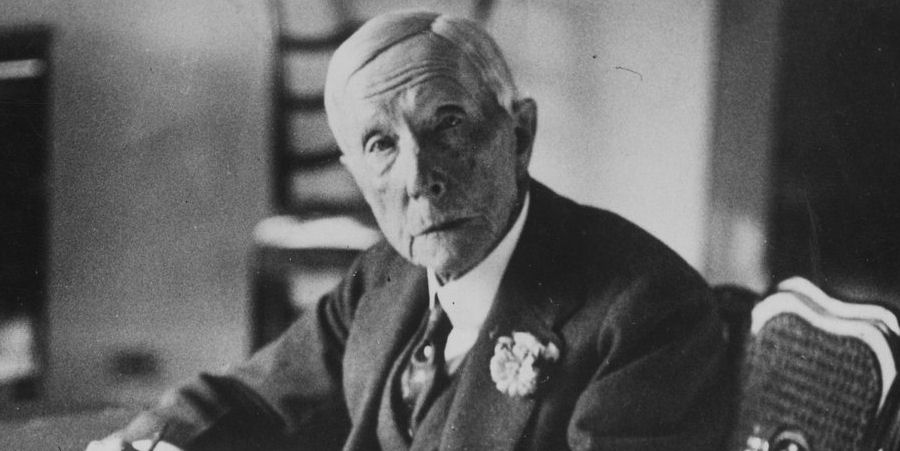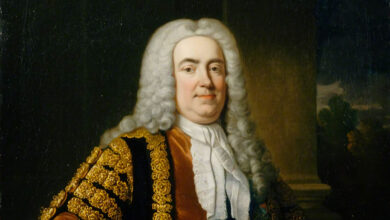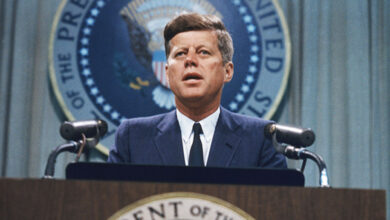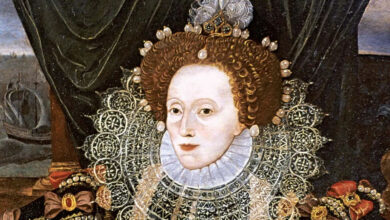
Podcast: Play in new window | Download
Subscribe: Spotify | Amazon Music | Youtube Music | RSS
For a man who was never president nor a world-changing inventor, it is surprising to many that the name John D Rockefeller continues to echo all the way from the 19th century through to the present. But whereas he may not have been a pivotal political figure, John D Rockefeller was one of the most important and powerful businessmen in nineteenth and early twentieth-century America and it was his vast wealth and the way that he utilized it that would cement his place in history.
Born on 8 July 1839 in Richford, New York, John Davison Rockefeller was part of a large family, although at the time the Rockefellers were not known for being particularly wealthy. The family moved many times throughout John’s young life before they finally ended up in Cleveland, Ohio.
John D Rockefeller began his forays into business at the young age of 16 when he began work as a bookkeeper, and by the time he was 20 he had already begun to enter into several business partnerships, specifically in the energy sector. Refined oil was on the rise as an energy source overtaking whale oil as the primary source of energy for heating and lighting during the middle of the 19th century.
Kerosene was superior to whale oil in many ways, not the least of which was its ease of acquisition as it did not require long costly sea voyages nor dangerous harvesting from an increasingly difficult to find marine mammal. Rockefeller founded his first oil company, Standard Oil, in 1870 and after he retired as the official head of the company in 1897, he remained its primary shareholder.
Through this new oil empire which was satisfying an ever-increasing demand from the American public for kerosene and gasoline, John D. Rockefeller became the wealthiest person in the country and perhaps even the world. At the peak of his power, John D Rockefeller controlled 90% of all oil in the United States, and Standard Oil had a near-total monopoly in refined oil products. The company also made huge technological leaps when it came to oil refinery and also made vast improvements in how such a complex corporate organisation should be structured.
Although electricity and the light bulb replaced oil as a source of lighting in the early 20th century, the demand for gasoline increased exponentially as the motor car became increasingly within the grasp of the working man. The internal combustion engine allowed those who controlled the oil industry to not only maintain but expand their vast wealth.
Because of his near-total monopoly on oil and his extreme wealth John D Rockefeller was able to gain significant control over the railroad industry as well as this was required to move his oil around the country. With this control and the improved efficiency with which Standard Oil could move oil around the country, Rockefeller was able to supply it more cheaply leading to an even greater increase in demand.
Like mythological King Midas, when it came to Rockefeller even things that might at first seem disastrous ended up being beneficial to him. In 1911 the Supreme Court ruled against Standard Oil for being in violation of new antitrust laws and the company was broken up into over 30 separate entities. Some of the new companies that were formed as a result of this are still familiar today. Brand names such as Exxon-Mobil and Chevron are among the highest-grossing oil-producing and distributing companies in the world.
Whilst the breakup of a company might have hurt other men, it only increased John D Rockefeller’s net worth as the value of shares doubled and tripled for these smaller companies, leading to Rockefeller becoming the first billionaire in US history.
At the height of his career, John D Rockefeller’s company holdings had an equivalent value to 2% of the United States economy. When adjusted for inflation, this equates to around $418 billion. He was personally worth approximately $92 billion dollars at the time of his death.
However, it was not just his vast fortune which made John D Rockefeller an American icon and historical figure, but it was really what he did with his fortune that he is most remembered for as he also became the first modern philanthropist. He used his vast wealth to create a more scientific and systematic method for philanthropy with the purpose of creating foundations that would target specific issues associated with education, science, and medicine. For example, his medical foundations brought about the near-total end of yellow fever and hookworm in the United States.
John D Rockefeller’s personal life was no less upstanding than his public life and his closest advisor throughout his entire career was his wife, Laura Rockefeller. He had five children with Laura, and he was a strict non-smoking, non-drinking Baptist for his entire life, even occasionally serving as a Sunday school teacher, janitor, church trustee, and church clerk. John D Rockefeller died on 23 May 1937 at the age of 97 but his companies continued to employ hundreds of thousands of people and his foundations have saved the lives of millions, educated millions more, and continue to be an example of what modern philanthropy can and should be.
Podcast: Play in new window | Download
Subscribe: Spotify | Amazon Music | Youtube Music | RSS




